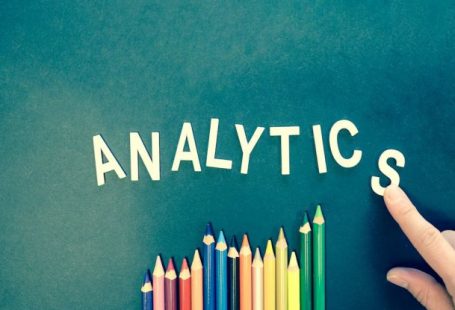In today’s data-driven world, the ability to make sense of vast amounts of information is crucial for businesses to stay competitive and make informed decisions. Data visualization plays a key role in this process, allowing complex data sets to be presented in a visual format that is easy to understand and interpret. By transforming raw data into charts, graphs, and interactive dashboards, organizations can uncover valuable insights and trends that might otherwise go unnoticed. Let’s explore the importance of data visualization in analytics and how it can drive better decision-making and business outcomes.
Enhanced Data Comprehension
One of the primary benefits of data visualization is its ability to enhance data comprehension. When presented with a table of numbers or raw data, it can be challenging for individuals to identify patterns or trends. However, by transforming this data into visual representations, such as bar graphs or pie charts, the information becomes more accessible and easier to interpret. Visualizations allow users to quickly grasp the key takeaways from a data set, enabling faster and more informed decision-making.
Improved Decision-Making
Data visualization also plays a critical role in improving decision-making processes within organizations. By providing a clear and concise overview of complex data, visualizations empower decision-makers to identify correlations, outliers, and trends that can inform strategic choices. Whether it’s optimizing marketing campaigns, forecasting sales trends, or tracking key performance indicators, visualizations enable stakeholders to make data-driven decisions with confidence. Moreover, interactive visualizations allow users to drill down into the data, gaining deeper insights and uncovering hidden opportunities.
Enhanced Data Discovery
Another significant advantage of data visualization is its ability to facilitate data discovery. Visual representations of data can reveal patterns and relationships that might not be apparent in raw data sets. By exploring data through interactive dashboards or dynamic charts, users can uncover insights that lead to new discoveries and opportunities for innovation. This iterative process of data exploration can spark creativity and drive continuous improvement within organizations, leading to enhanced competitiveness and growth.
Effective Communication
Data visualization serves as a powerful tool for effective communication within organizations. Instead of presenting dense reports or lengthy spreadsheets, visualizations offer a more engaging and digestible way to convey information. Whether communicating with internal teams or external stakeholders, visualizations can convey complex data in a compelling and persuasive manner. By telling a story through data visualization, organizations can foster better understanding, alignment, and collaboration among team members, ultimately driving better outcomes and results.
Increased Engagement and Adoption
In the age of information overload, capturing and maintaining audience attention is more challenging than ever. Data visualization addresses this challenge by making data engaging and interactive. By presenting information in visually appealing formats, such as heat maps or interactive charts, organizations can captivate their audience and encourage greater engagement with the data. This, in turn, leads to increased adoption of data-driven practices and a culture of analytics within the organization.
Empowering Self-Service Analytics
Data visualization also empowers self-service analytics within organizations. By providing users with intuitive tools to explore and analyze data on their own, organizations can democratize data access and empower employees at all levels to make data-informed decisions. Self-service analytics reduce reliance on data specialists and enable faster decision-making processes, leading to increased agility and responsiveness to changing market dynamics.
In conclusion, data visualization is a critical component of analytics that drives better decision-making, enhances data comprehension, and fosters innovation within organizations. By transforming raw data into visual representations, organizations can unlock valuable insights, communicate effectively, and empower employees to make data-driven decisions. As organizations continue to harness the power of data, investing in data visualization capabilities will be essential to stay ahead in today’s competitive landscape.





